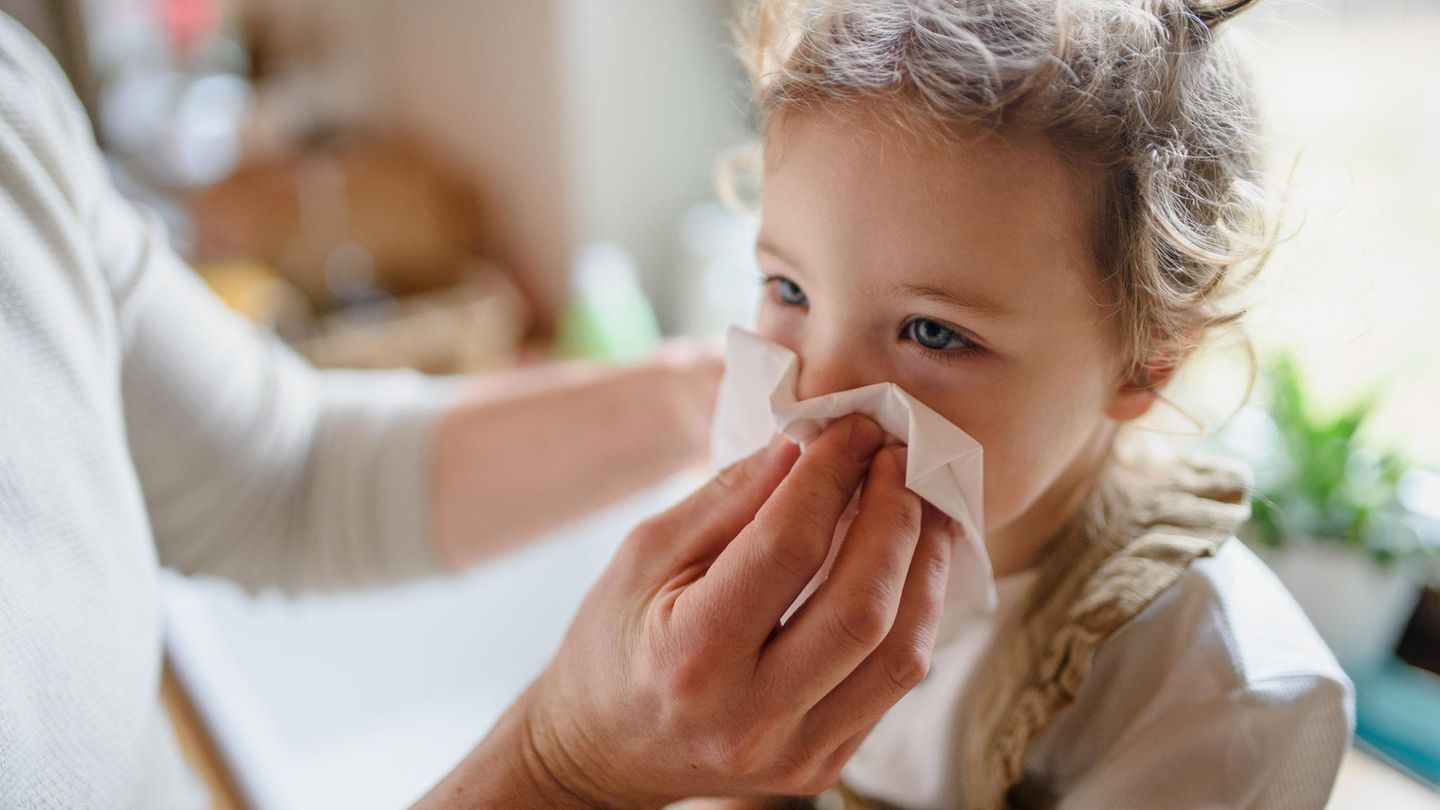Interview
Coughs, sometimes fever, and runny nose: Parents of daycare children are used to infections. At the moment it seems to hit the little ones particularly often. In an interview, pediatrician Jakob Maske explains why there is no need to worry and how a distinction is made between banal infections and corona infections.
Mr Mask, parents report that their children are noticeably sick this summer – with a cough, runny nose, and sometimes a fever. The Robert Koch Institute (RKI) also reports more respiratory infections compared to previous years. How is it currently in your waiting room?
We are currently seeing a mild increase in infections, especially among kindergarten children from around one and a half years of age. This is less the case with schoolchildren, but we are currently on summer vacation in Berlin. The children usually have classic, mild cold symptoms, nothing dramatic: cough, runny nose, rarely also fever or headache or sore throat. So these classic, well-known respiratory infections.
Interview with an expert
Jakob Maske works as a pediatrician in Berlin Schöneberg. He is also the federal press spokesman for the professional association of paediatricians (.
Such infections would be more likely to be located in winter. It’s July. Are you surprised?
Compared to a normal July there are more infections than I would expect, but not that many either. In a normal winter we have more. I would also say that this development is not all that surprising. Due to the lockdown, all of these pathogens could not spread as well in the past few months. Now that the schools and daycare centers are open again, they can circulate better.
The easing is also an opportunity for the coronavirus. How do you differentiate between harmless infections and corona infections in practice?
We do not examine which pathogen is present in each individual case, but instead try to rule out a corona infection. This can be done, for example, with rapid tests, for which we take a swab in the front of the nose.
Certainly not that easy with small children.
Of course, some don’t think that’s nice. But we explain to the children beforehand that it is similar to boogers, and with such a more positive attitude, most children will also accept the smear very well. If there is a specific suspicion of corona – for example after an infection in the immediate vicinity – we take a smear for a PCR test. It is even more sensitive than a quick test. The PCR test is also used if there are people in the immediate vicinity of the child who need to be particularly protected against infection with the coronavirus – for example, elderly or chronically ill people who have not yet been vaccinated or who cannot be vaccinated.
Are there any additional symptoms that make you prick up your ears?
The symptoms alone cannot distinguish between a corona infection and a harmless respiratory infection. This is also due to the fact that most children with a corona infection show little or no symptoms. But there are some complaints for which we proceed very carefully and prefer to take a smear again for a PCR test: in children with a sore throat, for example, but whose throat is not particularly red. Or in children who complain of headaches that they have never had in this form.
Respiratory infections in children: what does the RKI say?
The Robert Koch Institute (RKI) not only evaluates data on the coronavirus, but also on other respiratory infections in the population. It was shown that the rate of acute respiratory infections (ARE) among children (0 to 14 years of age) during the lockdown was below the values of previous years and increased in the past few weeks. In the 26th calendar week, the rate was “significantly” above the rate of previous years. However, the usual level of the winter months is not reached.
“Overall, the ARE values are now at a somewhat higher level for this time of the year”, writes the. “The current contact behavior of the population does not seem to prevent the transmission of typical pathogens of colds any longer well.”
The total ARE rate was most recently an estimated 3.6 percent or, based on 100,000 inhabitants, 3,600 cases. In the age group 0 to four years, the value climbed to around 15 percent. In the age group, rhinoviruses are the typical triggers of colds. Parainfluenza virus infections also almost exclusively affect the respiratory tract.
Do you notice greater uncertainty among parents?
In fact, it is usually the daycare centers or schools that pretend parents to have respiratory infections clarified with a doctor, even if they are mostly harmless. Sometimes it is also stated that the smear should not be taken at home, but at the pediatrician. Of course, this leads to more visits to the practices, but also not to the extent that we have to struggle with overload or the like.
What advice would you give to parents whose child from daycare or school brings home an infection from time to time?
First of all, it is important that the parents themselves are vaccinated and protected against the coronavirus. Then I would advise observing the child first: how is he? What are the symptoms? If you have a fever, fatigue, malaise or diarrhea, you should stay at home. If the environment is well protected, the child can cure the infection calmly and normally. If the child goes to a daycare center, school or community facility, I would also advise taking a quick test. If this is negative and the child otherwise only has mild, harmless symptoms of the respiratory tract without fever or diarrhea, they are also welcome to go to school or daycare.
It is certainly not easy for affected parents. The lockdown time was difficult for families in particular. And no sooner have the daycare centers open than infection after infection.
We medical professionals do not see these harmless infections as something negative, but as positive for the child. In the first year of daycare, children have an average of 10 to 15 infections that train the immune system and modulate the T cells of the immune system in a direction that is positive and can possibly prevent allergies. In this respect, parents shouldn’t worry if the child is sick every now and then, when they go to daycare or school. It is a normal process.




